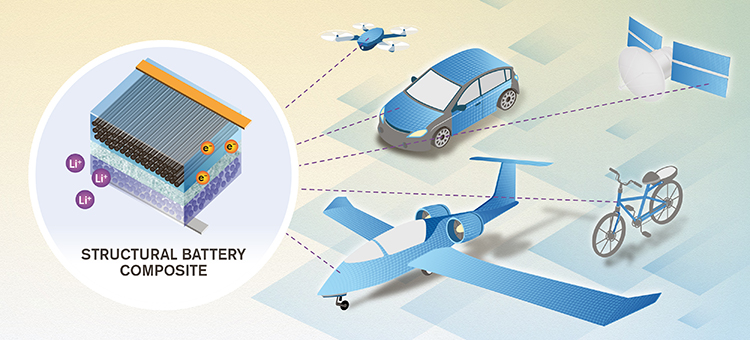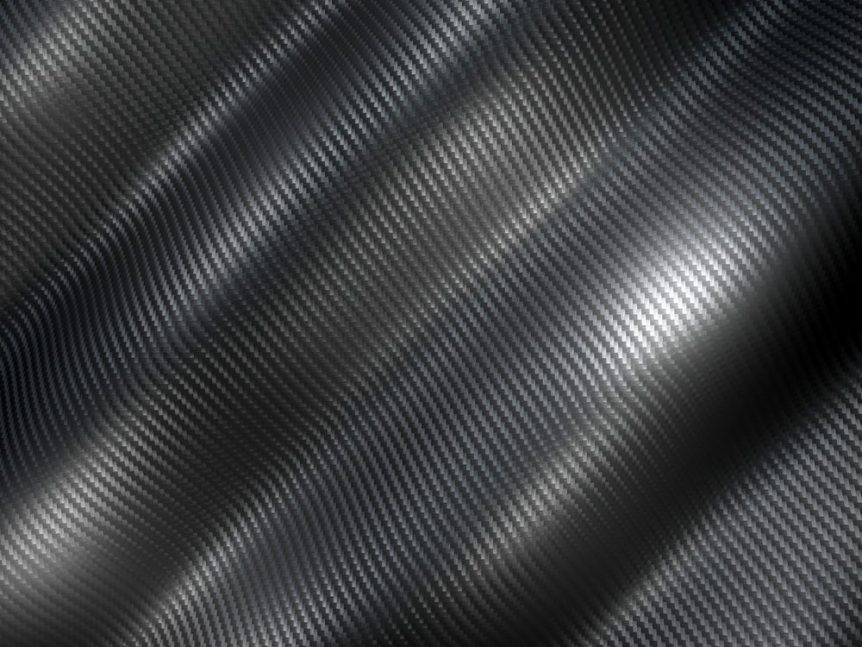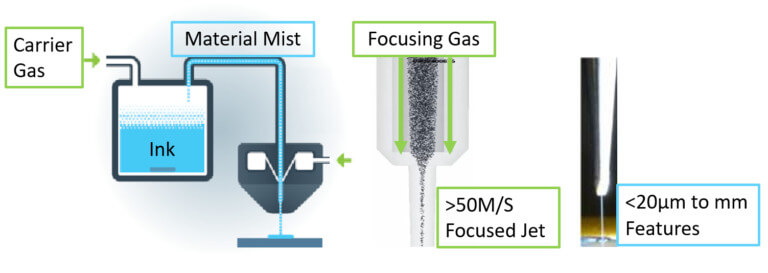What if the weight of the batteries in an electric airplane could virtually disappear? Researchers at Chalmers University of Technology in Gothenburg, Sweden have come up with an improved structural battery that exceeds the results of earlier research. So-called “massless batteries,” although not as energy dense as cylindrical or pouch lithium-ion batteries, could be worthy substitutes. The idea of making airplanes from materials that would provide energy from their inherent properties has been of interest for years. Your editor wrote an article on “The Grand Unified Airplane” for Kitplanes magazine in 2013 based on the idea of combining solar power, piezoelectric flexing of wings, and structural batteries. The ultimate goal was to create a machine that would move through the air on the energy of flight itself. This might seem an unreachable fantasy, but material scientists are bringing us closer to the dream. Headlining their report with a rather non-academic boast, Chalmers University promotes its, “Big breakthrough for ’massless’ energy …
Eather One – When Friction is a Good Thing
Tribolectrics Your editor has long promoted the idea of the Grand Unified Airplane, a vehicle which would essentially power itself from sunlight, piezoelectrics, structural batteries, and even the friction of the air over its surfaces. He wrote about the concept in the May, 2013 Kitplanes, and has noted an increasing number of articles in scientific journals describing a variety of nanogenerators, including tribolectric types. Tribolectrics are not new, having been discovered in the 18th century and initially quantified by Johan Carl Wilcke, a Swedish Physicist in 1757. “Tribo” comes from the Greek for “rub,” and as shown in the following video, even the rubbing of air over a surface can generate electricity. Note that about the 1:25 point Dr. Wang blows across the nanogenerator and lights up the LEDs. Taking that idea and running with it, Warsaw-based designer Michal Bonikowski designed the Eather One to run on electricity generated during the airplane’s movement through the air. As exotic as it …
Structural Battery Doubles Flight Time
Structural batteries, structures which are also their own energy storage devices, are being looked at with increasing frequency. Your editor has long been a proponent of integrating aircraft structures and the means of generating, storing and releasing energy – something he calls “the Grand Unified Airplane.” Joe Faust, a hang glider pioneer and designer of energy-gathering kites, put the idea of including batteries in an airplane’s structure into your editor’s mind. This video from the 1970’s shows Joe was not only athletic and adventurous – he was clean. His Wikipedia page is even more fascinating. 40 Years Later at Case Western Following Joe Faust’s lead, Case Western professor Vikas Prakash has demonstrated the potential or structural energy storage at model size. In what was described as an “otherwise unremarkable” craft, Prakash inserted “structural battery” components inside the six-foot wingspan on his unmanned aerial vehicle (UAV). Pre- insertion, the craft had been able to fly for 91 minutes before the batteries …
Carbon Fiber and the Grand Unified Airplane
Your editor has long held the belief that we are on the threshold of creating a Grand Unified Airplane, a craft that would draw all its energy from solar cells, the flexing of its wings, the air passing over its form, and the very act of flight itself. It seems to become less of a science fiction ideal and more of real-world possibility every day. Carbon fiber could be part of that possibility. What if your airplane were its own battery? Think of the weight savings and potential endurance and range. Your editor became fascinated with 2010 research done by Dr. Emile Greenhalgh of Imperial University in London, who developed a structural sandwich with carbon fiber outer layers and a fiberglass core. It could be used for body panels on a car, inspiring Volvo to become involved and proceed with initial tests. Since those early tests, other researchers have duplicated and expanded the research, with Dr. Leif Asp of Chalmers …
Promising 3D Printed Microlattice Battery
The three biggest words in battery structures are “Area, Area, Area.” The more anode and cathode area a battery can expose to the electrolyte that carries ions and electrons between the positive and negative ends of the battery, the better. Most battery configurations, according to researchers at Carnegie Mellon University and Missouri University of Science and Technology, block a great deal of interaction between these elements. Their solution is to go porous in a microlattice battery, thanks to 3D printing. Electrodes present some surface area to the electrolyte, which can only interact with the surface area presented. Rahul Panat at Carnegie Mellon and Jonghyun Park at Missouri S & T have created a cube-shaped battery composed of microlattice electrodes which present significantly greater amounts of surface area to the electrolyte. The title of their paper (with co-author Mohammad Sadeq Saleh) brings out this “area rule”: “3D printed hierarchically-porous microlattice electrode materials for exceptionally high specific capacity and areal capacity lithium …
Load-Bearing Supercapacitors
What if your battery served also as a wing or a fuselage? Several current efforts converge on creating batteries or supercapacitors that could function as structural elements in electric vehicles. We’ve reported on this before, with efforts by Dr. Emil Greenhalgh at Imperial College London and associated work by Volvo to make car components from the type of energy storing sandwich structure he developed. Your editor’s article on the “Grand Unified Airplane” in the July 2013 issue of Kitplanes magazine advanced the idea that such structures, coupled with graphene’s projected capabilities to collect solar energy, could lead to a self-powering aircraft. (In researching the current entry, he found that his idea had been done at model scale by BAE.) Reports from two universities show that others are working toward making that dream less than an idle fantasy. Researchers at Vanderbilt University are making headway toward creating a “Multifunctional Load-Bearing Solid-State Supercapacitor,” as titled in the American Chemical Society’s journal, Nano …





